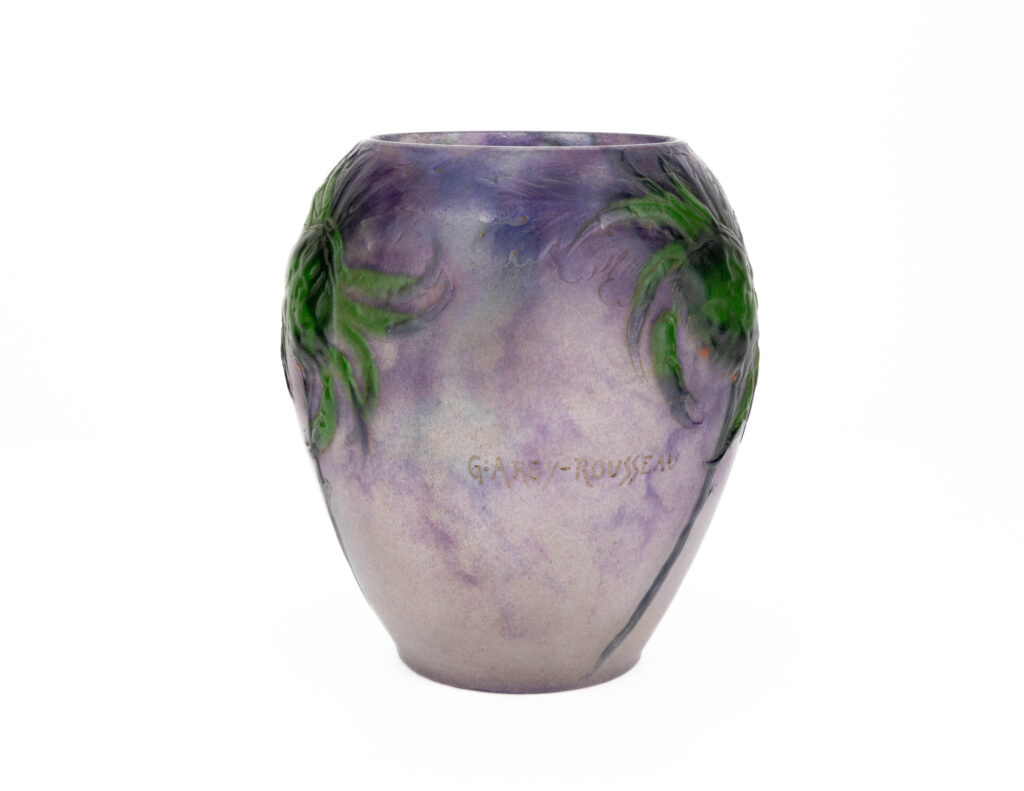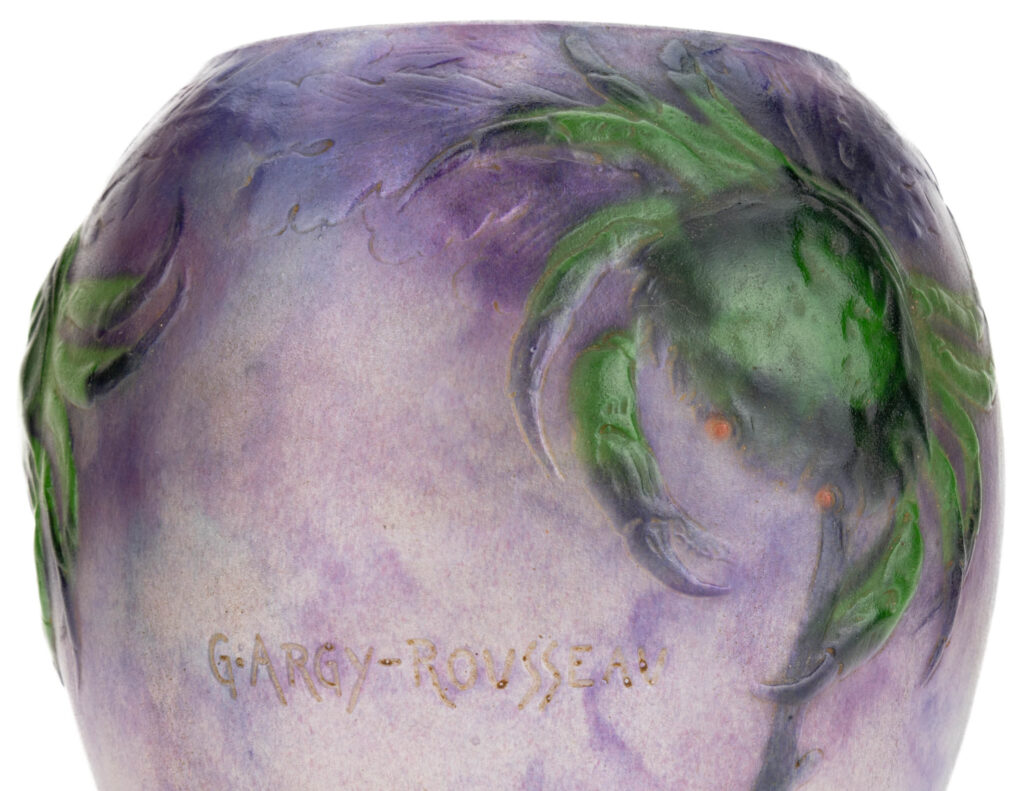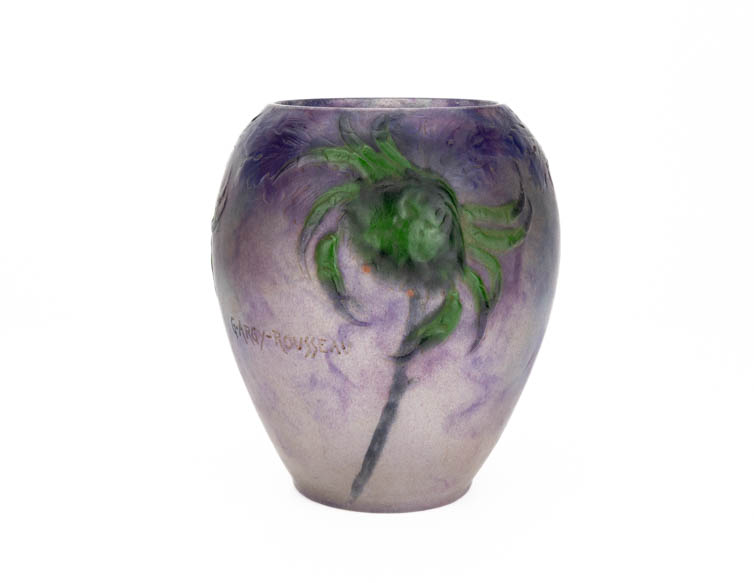Details:
Manufacturer: Gabriël Argy-Roussau
Motif: Crabes et Algues
Style: Art Deco
Material: Molded pâte de verre glass, grounded rim
Color: Colorless glass (pâte de crystal), purple, green, black, and red
Period: 1920 – 1929
Dimensions:
Height: 140mm / 5.51″
Diameter top rim: 80mm / 3.15″
Literature:
Janine Bloch-Dermant – G. Argy-Rousseau, Glassware As Art. Page 181
Price: This item has been sold.
Interested in a similar item? Please click here to send us a message using the contact form.
Description:
Gabriel Argy-Rousseau (Meslay-le-Vidame 1885–1953) was a true master of pâte de verre, a refined glassmaking technique that he perfected and through which he left a lasting mark on the Art Deco period. Each pâte de verre object he created is unique in color and texture, owing to a meticulous production process in which finely ground glass powder is melted into a mold. This technique demands both precision and artistic sensitivity, as the glass powder is applied in layers, resulting in vibrant color gradations and delicate detailing in every piece. Argy-Rousseau’s works are highly prized by collectors and museums worldwide, admired for their beauty, rarity, and craftsmanship.
This exceptional example of French pâte de verre, crafted by Gabriel Argy-Rousseau, is considered a highlight from his early oeuvre and exemplifies his artistic vision and technical mastery. The object dates to 1920 and is titled “Crabes et Algues” (Crabs and Algae), a name that reflects the maritime natural world that so inspired the artist. The harmonious combination of deep green glass swirling with purple hues creates a breathtaking contrast that enhances the intricacy and sophistication of the design. With his distinctive style, Argy-Rousseau achieved a delicate balance between abstraction and naturalistic detail, intensifying the expressive power of the piece.
The theme of sea life and flora—such as crabs and algae—was a recurring subject in Argy-Rousseau’s work. He was fascinated by the forms and textures of the underwater world, a source of inspiration that is evident throughout his creations. This fascination was shared by his contemporary and fellow pioneer of the pâte de verre technique, Amalric Walter, who also explored aquatic themes such as fish and coral in his works. Together, Argy-Rousseau and Walter elevated pâte de verre to a new artistic level, experimenting with color and form to poetically portray the natural world.
This vase bears the signature “G. Argy-Rousseau” on the body, along with the mark “France” on the underside—indicating both its origin and authenticity. The signature attests to the care and craftsmanship involved in its creation. Objects like this are enduring symbols of the French Art Deco movement, illustrating Argy-Rousseau’s innovation and mastery. Today, his works are highly sought after by connoisseurs and can be found in prominent museums and private collections around the globe. This particular example, “Crabes et Algues,” is a rare and valuable piece that exemplifies both the artistic and technical brilliance of Argy-Rousseau—standing as a testament to his exceptional place in the history of glass art, timeless and yet strikingly modern.
















